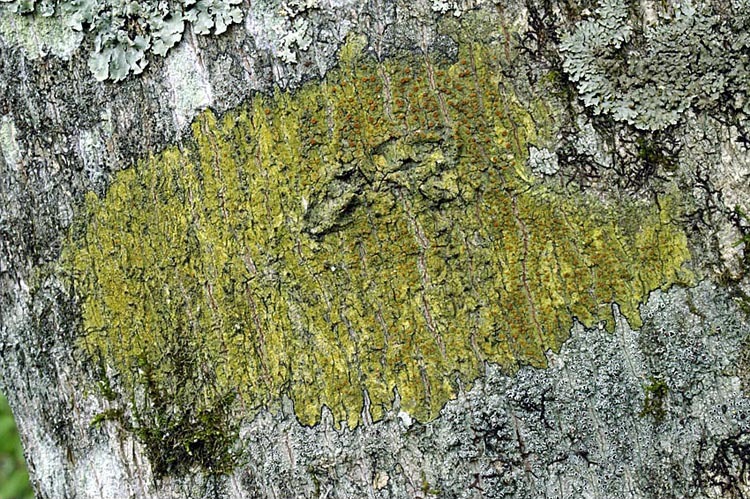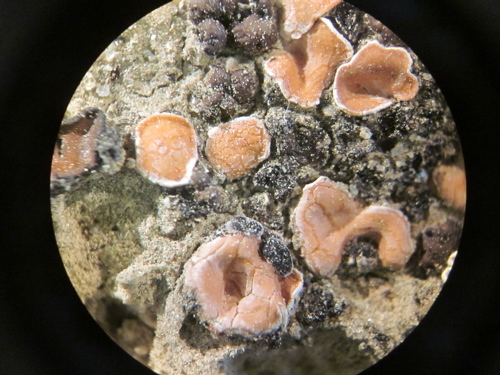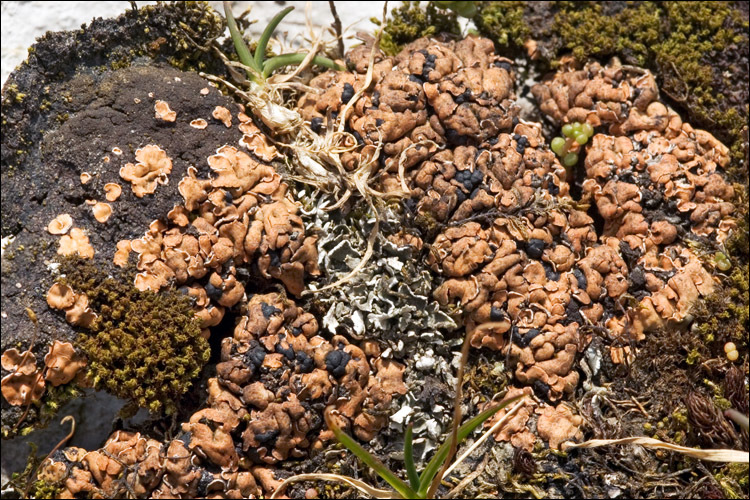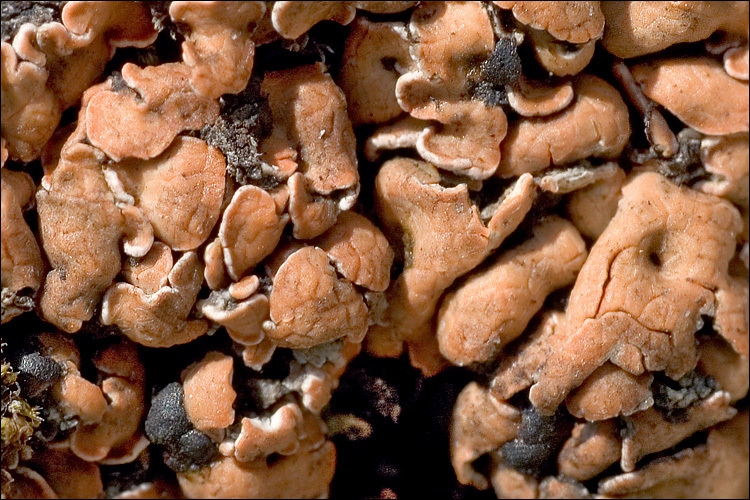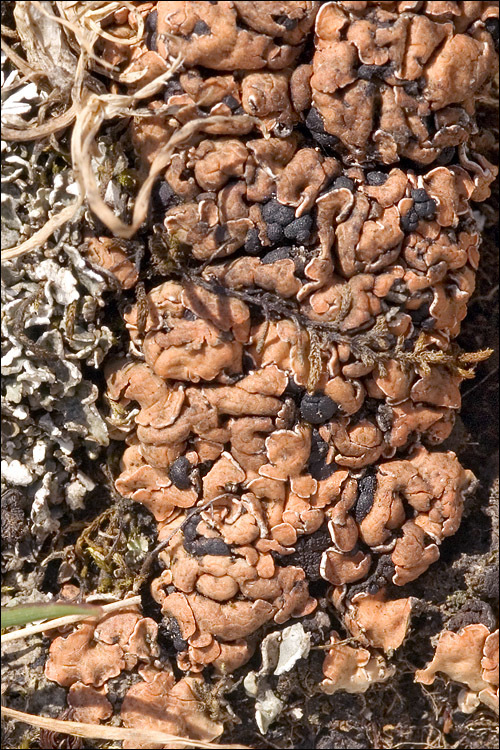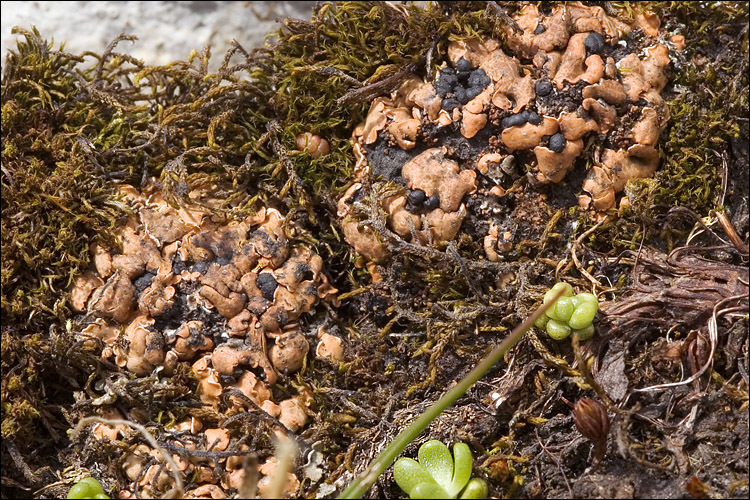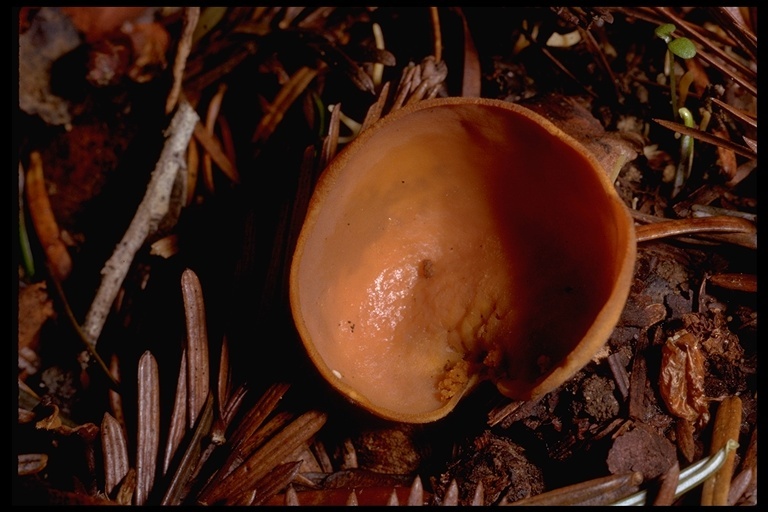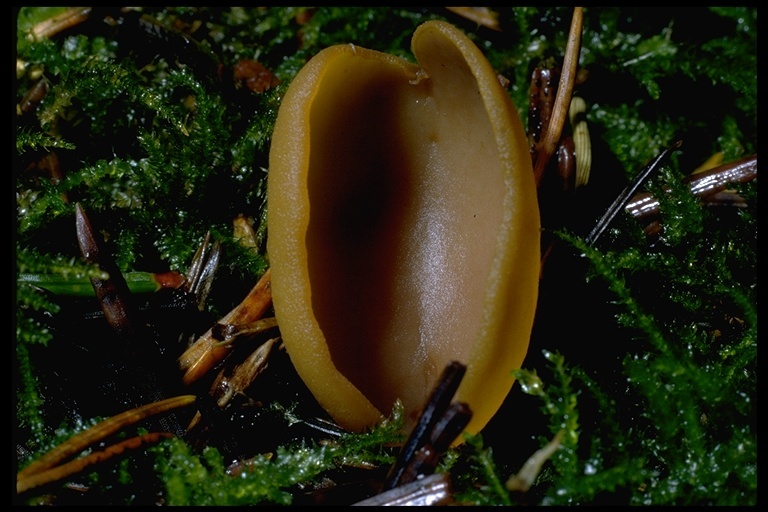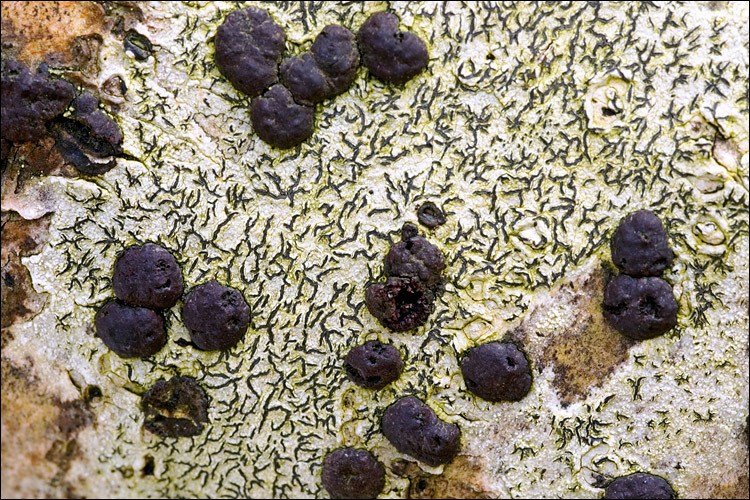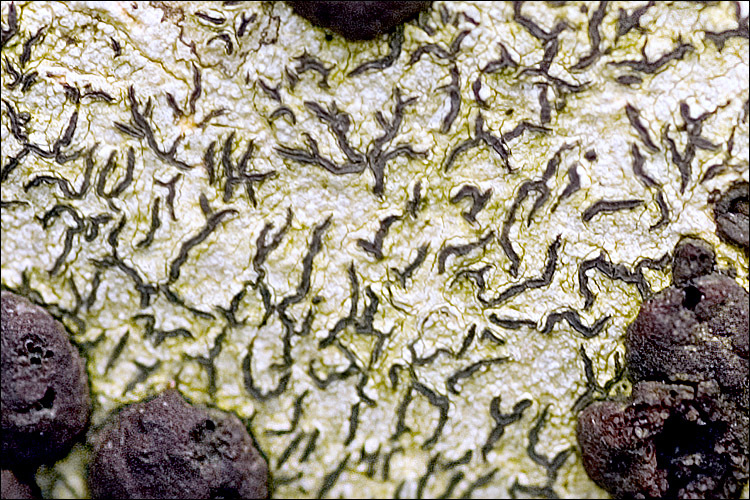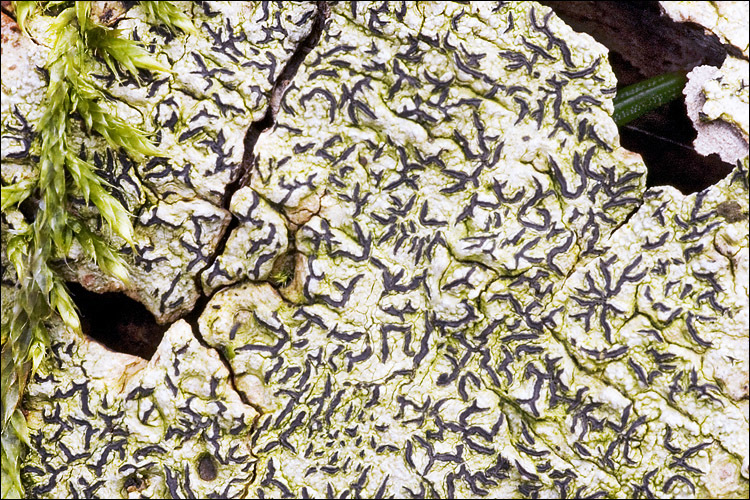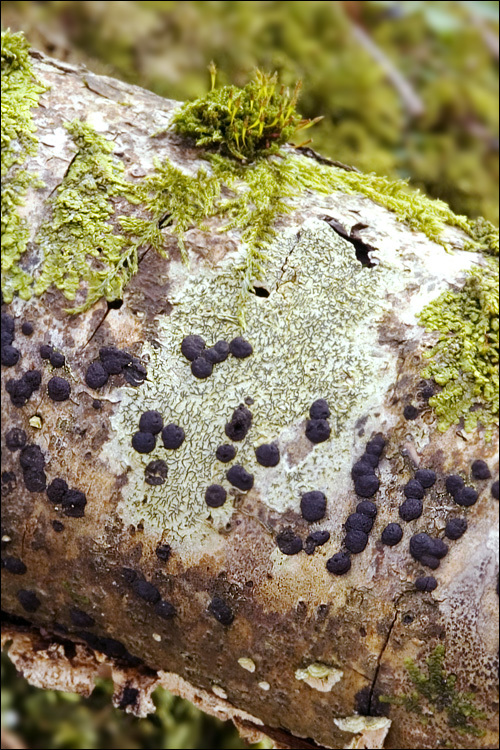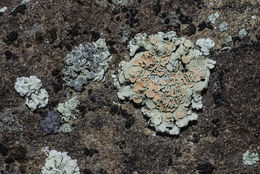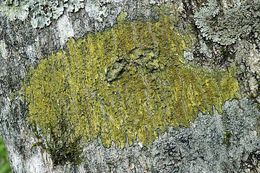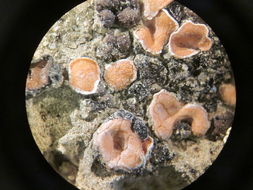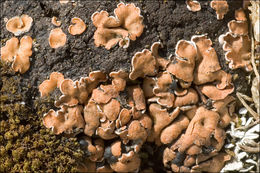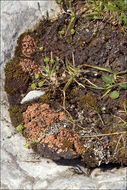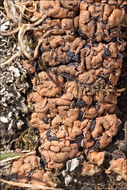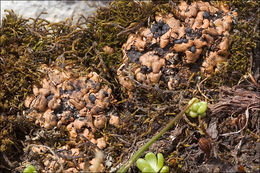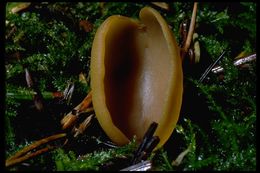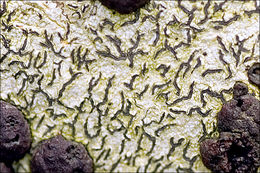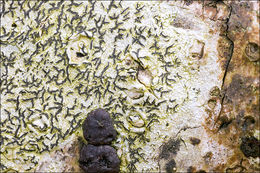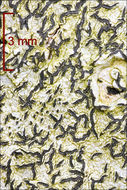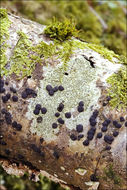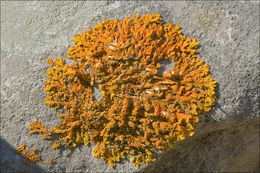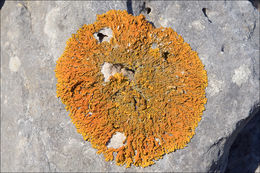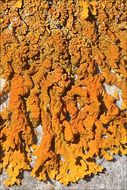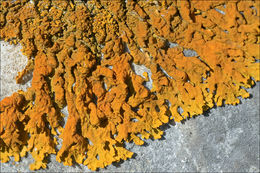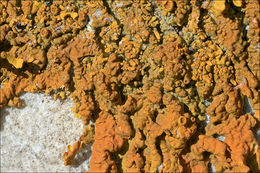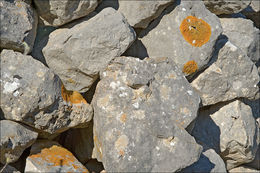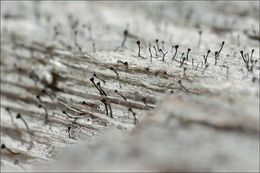-
2017 California Academy of Sciences
CalPhotos
-
-
-
Habitat: Dry upland grassland, open space, plain ground, full sun, fully exposed to precipitations, precipitations ~ 3.000 mm/year, average temperature 0-2 deg C, elevation 1.960 m (6.400 feet), alpine phytogeographical region. - Substratum: Shallow mossy soil covering calcareous rock. - References: - F. Dobson, Lichens, The Richmond Publ. (2005), p372. - V.Wirth, Die Flechen Baden-Wuerttembergs, Ulmer, Vol. 1.and 2.(1995), p787. - I. Brodo, S.Sharnoff, S.Sharnoff, Lichens of North America, Yale Uni. Press (2001), p599. - V. Wirth, R.Duell, Farbatlas Flechten und Moose, Ulmer (2000), p116. - Comments: Wirth considers this species as a rare one.
-
Habitat: Dry upland grassland, open space, plain ground, full sun, fully exposed to precipitations, precipitations ~ 3.000 mm/year, average temperature 0-2 deg C, elevation 1.960 m (6.400 feet), alpine phytogeographical region. - Substratum: Shallow mossy soil covering calcareous rock. - References: - F. Dobson, Lichens, The Richmond Publ. (2005), p372. - V.Wirth, Die Flechen Baden-Wuerttembergs, Ulmer, Vol. 1.and 2.(1995), p787. - I. Brodo, S.Sharnoff, S.Sharnoff, Lichens of North America, Yale Uni. Press (2001), p599. - V. Wirth, R.Duell, Farbatlas Flechten und Moose, Ulmer (2000), p116. - Comments: Wirth considers this species as a rare one.
-
Habitat: Dry upland grassland, open space, plain ground, full sun, fully exposed to precipitations, precipitations ~ 3.000 mm/year, average temperature 0-2 deg C, elevation 1.960 m (6.400 feet), alpine phytogeographical region. - Substratum: Shallow mossy soil covering calcareous rock. - References: - F. Dobson, Lichens, The Richmond Publ. (2005), p372. - V.Wirth, Die Flechen Baden-Wuerttembergs, Ulmer, Vol. 1.and 2.(1995), p787. - I. Brodo, S.Sharnoff, S.Sharnoff, Lichens of North America, Yale Uni. Press (2001), p599. - V. Wirth, R.Duell, Farbatlas Flechten und Moose, Ulmer (2000), p116. - Comments: Wirth considers this species as a rare one.
-
Habitat: Dry upland grassland, open space, plain ground, full sun, fully exposed to precipitations, precipitations ~ 3.000 mm/year, average temperature 0-2 deg C, elevation 1.960 m (6.400 feet), alpine phytogeographical region. - Substratum: Shallow mossy soil covering calcareous rock. - References: - F. Dobson, Lichens, The Richmond Publ. (2005), p372. - V.Wirth, Die Flechen Baden-Wuerttembergs, Ulmer, Vol. 1.and 2.(1995), p787. - I. Brodo, S.Sharnoff, S.Sharnoff, Lichens of North America, Yale Uni. Press (2001), p599. - V. Wirth, R.Duell, Farbatlas Flechten und Moose, Ulmer (2000), p116. - Comments: Wirth considers this species as a rare one.
-
Habitat: Dry upland grassland, open space, plain ground, full sun, fully exposed to precipitations, precipitations ~ 3.000 mm/year, average temperature 0-2 deg C, elevation 1.960 m (6.400 feet), alpine phytogeographical region. - Substratum: Shallow mossy soil covering calcareous rock. - References: - F. Dobson, Lichens, The Richmond Publ. (2005), p372. - V.Wirth, Die Flechen Baden-Wuerttembergs, Ulmer, Vol. 1.and 2.(1995), p787. - I. Brodo, S.Sharnoff, S.Sharnoff, Lichens of North America, Yale Uni. Press (2001), p599. - V. Wirth, R.Duell, Farbatlas Flechten und Moose, Ulmer (2000), p116. - Comments: Wirth considers this species as a rare one.
-
Habitat: Dry upland grassland, open space, plain ground, full sun, fully exposed to precipitations, precipitations ~ 3.000 mm/year, average temperature 0-2 deg C, elevation 1.960 m (6.400 feet), alpine phytogeographical region. - Substratum: Shallow mossy soil covering calcareous rock. - References: - F. Dobson, Lichens, The Richmond Publ. (2005), p372. - V.Wirth, Die Flechen Baden-Wuerttembergs, Ulmer, Vol. 1.and 2.(1995), p787. - I. Brodo, S.Sharnoff, S.Sharnoff, Lichens of North America, Yale Uni. Press (2001), p599. - V. Wirth, R.Duell, Farbatlas Flechten und Moose, Ulmer (2000), p116. - Comments: Wirth considers this species as a rare one.
-
2001 California Academy of Sciences
CalPhotos
-
2001 California Academy of Sciences
CalPhotos
-
Slo.: ? - Habitat: Mixed wood, near a stream, humid and shaded place, protected from direct rain by tree canopies, precipitations ~3.000 mm/year, average temperature 7-9 deg C, elevation 630 m (2.100 feet), alpine phytogeographical region. Substratum: Bark of a fallen trunk of Fagus sylvatica
-
Slo.: ? - Habitat: Mixed wood, near a stream, humid and shaded place, protected from direct rain by tree canopies, precipitations ~3.000 mm/year, average temperature 7-9 deg C, elevation 630 m (2.100 feet), alpine phytogeographical region. Substratum: Bark of a fallen trunk of Fagus sylvatica
-
Slo.: ? - Habitat: Mixed wood, near a stream, humid and shaded place, protected from direct rain by tree canopies, precipitations ~3.000 mm/year, average temperature 7-9 deg C, elevation 630 m (2.100 feet), alpine phytogeographical region. Substratum: Bark of a fallen trunk of Fagus sylvatica
-
Slo.: ? - Habitat: Mixed wood, near a stream, humid and shaded place, protected from direct rain by tree canopies, precipitations ~3.000 mm/year, average temperature 7-9 deg C, elevation 630 m (2.100 feet), alpine phytogeographical region. Substratum: Bark of a fallen trunk of Fagus sylvatica
-
Slo.: ? - Habitat: Mixed wood, near a stream, humid and shaded place, protected from direct rain by tree canopies, precipitations ~3.000 mm/year, average temperature 7-9 deg C, elevation 630 m (2.100 feet), alpine phytogeographical region. Substratum: Bark of a fallen trunk of Fagus sylvatica
-
Slo.: ? - Habitat: Mixed wood, near a stream, humid and shaded place, protected from direct rain by tree canopies, precipitations ~3.000 mm/year, average temperature 7-9 deg C, elevation 630 m (2.100 feet), alpine phytogeographical region. Substratum: Bark of a fallen trunk of Fagus sylvatica
-
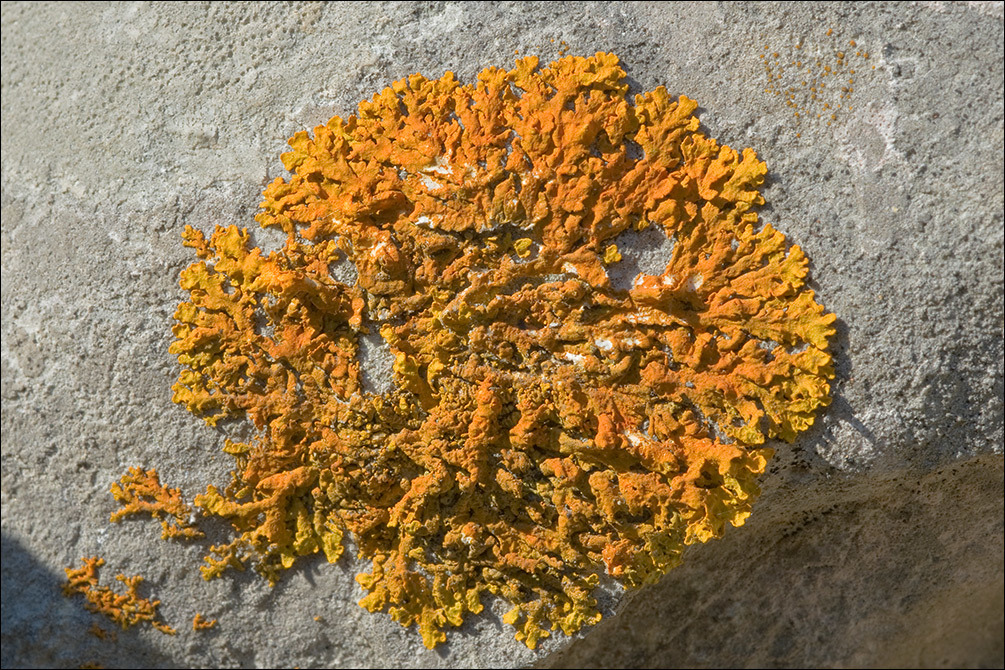
Syn: Xanthoria ectaneoides (Nyl.) Zahlbr., Xanthoria parietina var. ectanea auct. brit, Parmelia aureola Ach., Physcia aureola (Ach.) Linds., Xanthoria parietina f. aureola (Ach.) P. Syd. - Habitat: dry stony wall delimiting (mostly) abandoned fields and deserted terraced olive groves; close to sea shore; almost flat terrain; calcareous, skeletal ground; dry place, full sun; exposed to direct rain, average precipitations ~ 900 mm/year, average temperature 12-14 deg C, elevations 35 m (110 feet), Sub-Mediterranean phytogeographical region. - Substratum: vertical to steeply inclined surface of limestone rocks, west-southwest exposition. - Comment: This was a beautiful and interesting find. The lichen is very conspicuous because of its deep orange color and considerable size. Several specimens were found in the vicinity. Also its taxonomy is interesting. After Smith (2009) it should be named Xanthoria aureola. However, this name has been long time used (and is still so by many) for another very similar specimen Xanthoria calcicola Oxner. Many (Ref.:2) would rather call them and also do so (Ref.:3) Xanthoria ectaneoides. They claim that the name Xanthoria aureola opposes the Article 57 of the International Code of Botanical Nomenclature. Other consider this species only as a 'kind of' very common Xanthoria parietina. The result is a considerable confusion in naming. Be that as it may Xanthoria calcicola differs from Xanthoria aureola by densely isidiate central part of the thallus (see Ref.: 7) and less strap-shaped and sparsely overlapping thallus terminal lobes (Smith 2009). Smith (2009) considers this species as Western European species and GBIF map confirms this by showing most of observations along west coasts from north Scandinavia to Canary Islands and with a few exceptions in Germany (a single specimen now in herbarium Berlin), on Crete and several finds in Italy (Ref.:6). Almost all finds are close to sea shores.What puzzles me with this observation is the center of the thallus on picture 2b, upper part. The thallus is 'bumpy' there and this bumps may eventually be interpreted as isidia. I am not sure. If so, this would not fit to Xanthoria aureola. Also, Smith lists ' siliceous or, rarely, basic rock ' as a most common substratum, while Dobson 2005 doesn't list siliceous rock as an option, but eventually allows basic rock. This find was surely found on calcareous, basic rock. The lichen was photographed in completely dry state.Ref.:(1) C.W.Smith, et all, The lichens of Great Britain and Ireland,The British Lichen Society,(2009), p 968.(2) http://www.lichens.lastdragon.org/Xanthoria_aureola.html (accessed April 3. 2018) (3) F.S. Dobson, Lichens, The Richmonds Publishing Ca.LTD (2005), p 462.(4) V. Wirth, Die Flechten Baden-Wrttembergs, Teil.2., Ulmer (1995), p 974.(5) https://www.gbif.org/species/2609974 (accessed April 3. 2018)(6) http://dbiodbs.univ.trieste.it/italic/italic41 (accessed April 3. 2018)(7) http://www.lichens.lastdragon.org/Xanthoria_calcicola.html (accessed April 4. 2018)
-

Syn: Xanthoria ectaneoides (Nyl.) Zahlbr., Xanthoria parietina var. ectanea auct. brit, Parmelia aureola Ach., Physcia aureola (Ach.) Linds., Xanthoria parietina f. aureola (Ach.) P. Syd. - Habitat: dry stony wall delimiting (mostly) abandoned fields and deserted terraced olive groves; close to sea shore; almost flat terrain; calcareous, skeletal ground; dry place, full sun; exposed to direct rain, average precipitations ~ 900 mm/year, average temperature 12-14 deg C, elevations 35 m (110 feet), Sub-Mediterranean phytogeographical region. - Substratum: vertical to steeply inclined surface of limestone rocks, west-southwest exposition. - Comment: This was a beautiful and interesting find. The lichen is very conspicuous because of its deep orange color and considerable size. Several specimens were found in the vicinity. Also its taxonomy is interesting. After Smith (2009) it should be named Xanthoria aureola. However, this name has been long time used (and is still so by many) for another very similar specimen Xanthoria calcicola Oxner. Many (Ref.:2) would rather call them and also do so (Ref.:3) Xanthoria ectaneoides. They claim that the name Xanthoria aureola opposes the Article 57 of the International Code of Botanical Nomenclature. Other consider this species only as a 'kind of' very common Xanthoria parietina. The result is a considerable confusion in naming. Be that as it may Xanthoria calcicola differs from Xanthoria aureola by densely isidiate central part of the thallus (see Ref.: 7) and less strap-shaped and sparsely overlapping thallus terminal lobes (Smith 2009). Smith (2009) considers this species as Western European species and GBIF map confirms this by showing most of observations along west coasts from north Scandinavia to Canary Islands and with a few exceptions in Germany (a single specimen now in herbarium Berlin), on Crete and several finds in Italy (Ref.:6). Almost all finds are close to sea shores. What puzzles me with this observation is the center of the thallus on picture 2b, upper part. The thallus is 'bumpy' there and this bumps may eventually be interpreted as isidia. I am not sure. If so, this would not fit to Xanthoria aureola. Also, Smith lists ' siliceous or, rarely, basic rock ' as a most common substratum, while Dobson 2005 doesn't list siliceous rock as an option, but eventually allows basic rock. This find was surely found on calcareous, basic rock. The lichen was photographed in completely dry state. Ref.: (1) C.W.Smith, et all, The lichens of Great Britain and Ireland,The British Lichen Society,(2009), p 968. (2) http://www.lichens.lastdragon.org/Xanthoria_aureola.html (accessed April 3. 2018) (3) F.S. Dobson, Lichens, The Richmonds Publishing Ca.LTD (2005), p 462. (4) V. Wirth, Die Flechten Baden-Wrttembergs, Teil.2., Ulmer (1995), p 974. (5) https://www.gbif.org/species/2609974 (accessed April 3. 2018) (6) http://dbiodbs.univ.trieste.it/italic/italic41 (accessed April 3. 2018) (7) http://www.lichens.lastdragon.org/Xanthoria_calcicola.html (accessed April 4. 2018)
-
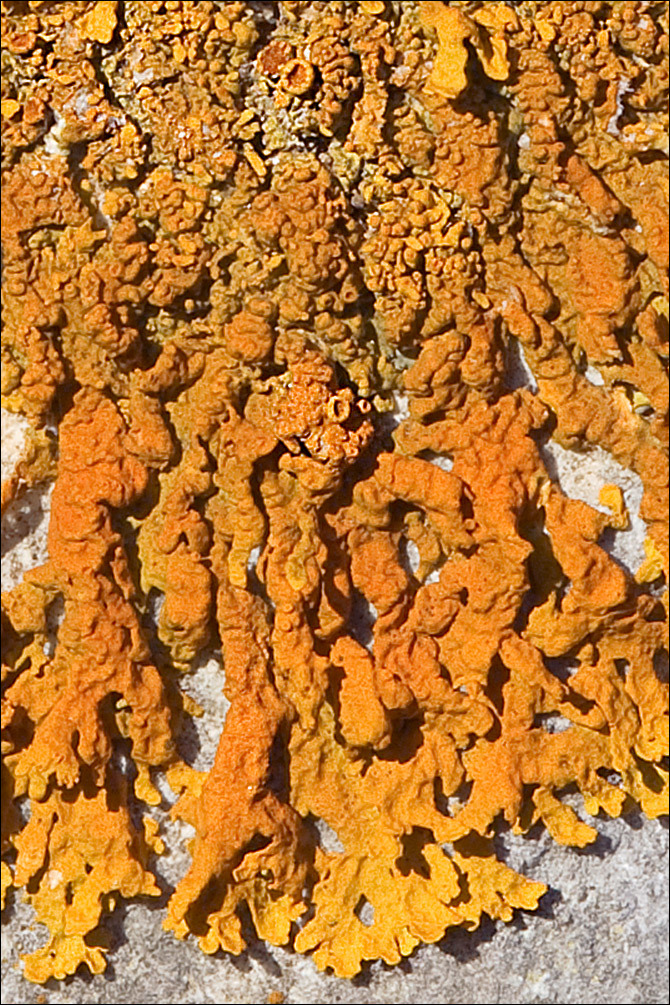
Syn: Xanthoria ectaneoides (Nyl.) Zahlbr., Xanthoria parietina var. ectanea auct. brit, Parmelia aureola Ach., Physcia aureola (Ach.) Linds., Xanthoria parietina f. aureola (Ach.) P. Syd. - Habitat: dry stony wall delimiting (mostly) abandoned fields and deserted terraced olive groves; close to sea shore; almost flat terrain; calcareous, skeletal ground; dry place, full sun; exposed to direct rain, average precipitations ~ 900 mm/year, average temperature 12-14 deg C, elevations 35 m (110 feet), Sub-Mediterranean phytogeographical region. - Substratum: vertical to steeply inclined surface of limestone rocks, west-southwest exposition. - Comment: This was a beautiful and interesting find. The lichen is very conspicuous because of its deep orange color and considerable size. Several specimens were found in the vicinity. Also its taxonomy is interesting. After Smith (2009) it should be named Xanthoria aureola. However, this name has been long time used (and is still so by many) for another very similar specimen Xanthoria calcicola Oxner. Many (Ref.:2) would rather call them and also do so (Ref.:3) Xanthoria ectaneoides. They claim that the name Xanthoria aureola opposes the Article 57 of the International Code of Botanical Nomenclature. Other consider this species only as a 'kind of' very common Xanthoria parietina. The result is a considerable confusion in naming. Be that as it may Xanthoria calcicola differs from Xanthoria aureola by densely isidiate central part of the thallus (see Ref.: 7) and less strap-shaped and sparsely overlapping thallus terminal lobes (Smith 2009). Smith (2009) considers this species as Western European species and GBIF map confirms this by showing most of observations along west coasts from north Scandinavia to Canary Islands and with a few exceptions in Germany (a single specimen now in herbarium Berlin), on Crete and several finds in Italy (Ref.:6). Almost all finds are close to sea shores. What puzzles me with this observation is the center of the thallus on picture 2b, upper part. The thallus is 'bumpy' there and this bumps may eventually be interpreted as isidia. I am not sure. If so, this would not fit to Xanthoria aureola. Also, Smith lists ' siliceous or, rarely, basic rock ' as a most common substratum, while Dobson 2005 doesn't list siliceous rock as an option, but eventually allows basic rock. This find was surely found on calcareous, basic rock. The lichen was photographed in completely dry state. Ref.: (1) C.W.Smith, et all, The lichens of Great Britain and Ireland,The British Lichen Society,(2009), p 968. (2) http://www.lichens.lastdragon.org/Xanthoria_aureola.html (accessed April 3. 2018) (3) F.S. Dobson, Lichens, The Richmonds Publishing Ca.LTD (2005), p 462. (4) V. Wirth, Die Flechten Baden-Wrttembergs, Teil.2., Ulmer (1995), p 974. (5) https://www.gbif.org/species/2609974 (accessed April 3. 2018) (6) http://dbiodbs.univ.trieste.it/italic/italic41 (accessed April 3. 2018) (7) http://www.lichens.lastdragon.org/Xanthoria_calcicola.html (accessed April 4. 2018)
-
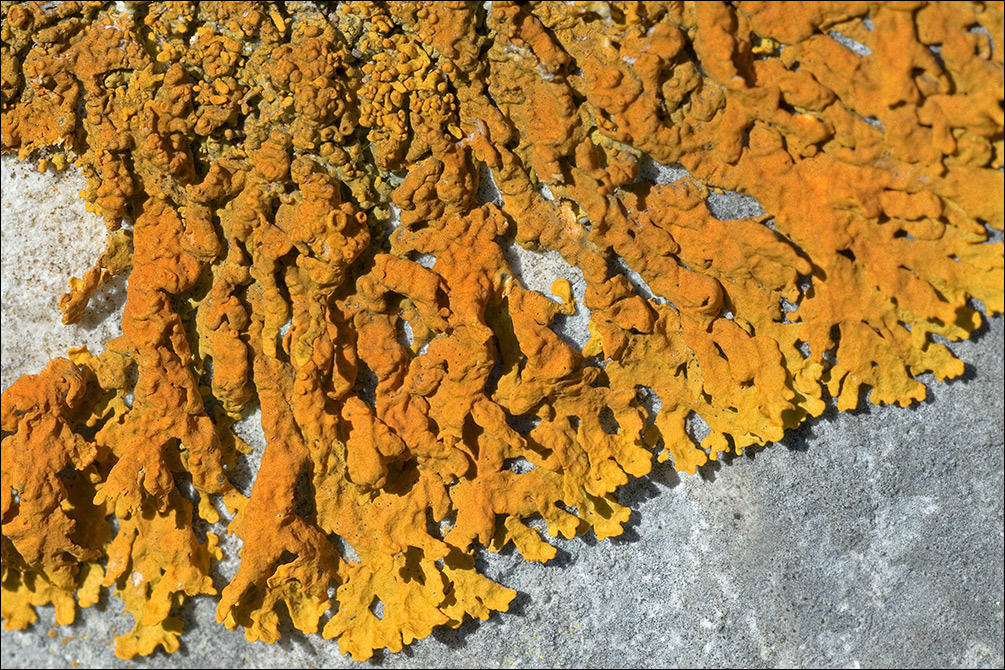
Syn: Xanthoria ectaneoides (Nyl.) Zahlbr., Xanthoria parietina var. ectanea auct. brit, Parmelia aureola Ach., Physcia aureola (Ach.) Linds., Xanthoria parietina f. aureola (Ach.) P. Syd. - Habitat: dry stony wall delimiting (mostly) abandoned fields and deserted terraced olive groves; close to sea shore; almost flat terrain; calcareous, skeletal ground; dry place, full sun; exposed to direct rain, average precipitations ~ 900 mm/year, average temperature 12-14 deg C, elevations 35 m (110 feet), Sub-Mediterranean phytogeographical region. - Substratum: vertical to steeply inclined surface of limestone rocks, west-southwest exposition. - Comment: This was a beautiful and interesting find. The lichen is very conspicuous because of its deep orange color and considerable size. Several specimens were found in the vicinity. Also its taxonomy is interesting. After Smith (2009) it should be named Xanthoria aureola. However, this name has been long time used (and is still so by many) for another very similar specimen Xanthoria calcicola Oxner. Many (Ref.:2) would rather call them and also do so (Ref.:3) Xanthoria ectaneoides. They claim that the name Xanthoria aureola opposes the Article 57 of the International Code of Botanical Nomenclature. Other consider this species only as a 'kind of' very common Xanthoria parietina. The result is a considerable confusion in naming. Be that as it may Xanthoria calcicola differs from Xanthoria aureola by densely isidiate central part of the thallus (see Ref.: 7) and less strap-shaped and sparsely overlapping thallus terminal lobes (Smith 2009). Smith (2009) considers this species as Western European species and GBIF map confirms this by showing most of observations along west coasts from north Scandinavia to Canary Islands and with a few exceptions in Germany (a single specimen now in herbarium Berlin), on Crete and several finds in Italy (Ref.:6). Almost all finds are close to sea shores. What puzzles me with this observation is the center of the thallus on picture 2b, upper part. The thallus is 'bumpy' there and this bumps may eventually be interpreted as isidia. I am not sure. If so, this would not fit to Xanthoria aureola. Also, Smith lists ' siliceous or, rarely, basic rock ' as a most common substratum, while Dobson 2005 doesn't list siliceous rock as an option, but eventually allows basic rock. This find was surely found on calcareous, basic rock. The lichen was photographed in completely dry state. Ref.: (1) C.W.Smith, et all, The lichens of Great Britain and Ireland,The British Lichen Society,(2009), p 968. (2) http://www.lichens.lastdragon.org/Xanthoria_aureola.html (accessed April 3. 2018) (3) F.S. Dobson, Lichens, The Richmonds Publishing Ca.LTD (2005), p 462. (4) V. Wirth, Die Flechten Baden-Wrttembergs, Teil.2., Ulmer (1995), p 974. (5) https://www.gbif.org/species/2609974 (accessed April 3. 2018) (6) http://dbiodbs.univ.trieste.it/italic/italic41 (accessed April 3. 2018) (7) http://www.lichens.lastdragon.org/Xanthoria_calcicola.html (accessed April 4. 2018)
-
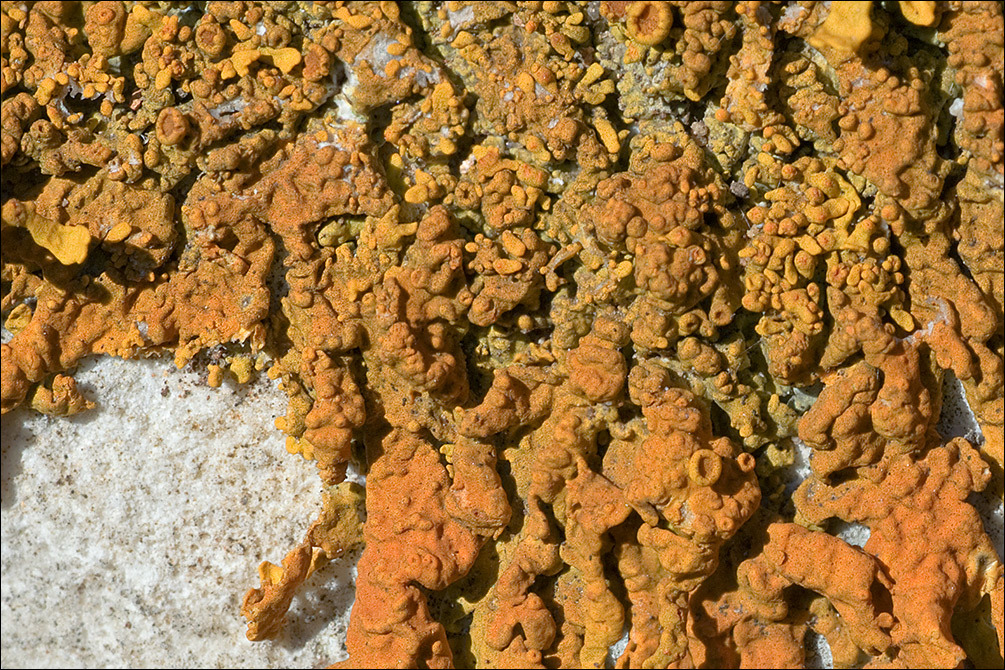
Syn: Xanthoria ectaneoides (Nyl.) Zahlbr., Xanthoria parietina var. ectanea auct. brit, Parmelia aureola Ach., Physcia aureola (Ach.) Linds., Xanthoria parietina f. aureola (Ach.) P. Syd. - Habitat: dry stony wall delimiting (mostly) abandoned fields and deserted terraced olive groves; close to sea shore; almost flat terrain; calcareous, skeletal ground; dry place, full sun; exposed to direct rain, average precipitations ~ 900 mm/year, average temperature 12-14 deg C, elevations 35 m (110 feet), Sub-Mediterranean phytogeographical region. - Substratum: vertical to steeply inclined surface of limestone rocks, west-southwest exposition. - Comment: This was a beautiful and interesting find. The lichen is very conspicuous because of its deep orange color and considerable size. Several specimens were found in the vicinity. Also its taxonomy is interesting. After Smith (2009) it should be named Xanthoria aureola. However, this name has been long time used (and is still so by many) for another very similar specimen Xanthoria calcicola Oxner. Many (Ref.:2) would rather call them and also do so (Ref.:3) Xanthoria ectaneoides. They claim that the name Xanthoria aureola opposes the Article 57 of the International Code of Botanical Nomenclature. Other consider this species only as a 'kind of' very common Xanthoria parietina. The result is a considerable confusion in naming. Be that as it may Xanthoria calcicola differs from Xanthoria aureola by densely isidiate central part of the thallus (see Ref.: 7) and less strap-shaped and sparsely overlapping thallus terminal lobes (Smith 2009). Smith (2009) considers this species as Western European species and GBIF map confirms this by showing most of observations along west coasts from north Scandinavia to Canary Islands and with a few exceptions in Germany (a single specimen now in herbarium Berlin), on Crete and several finds in Italy (Ref.:6). Almost all finds are close to sea shores. What puzzles me with this observation is the center of the thallus on picture 2b, upper part. The thallus is 'bumpy' there and this bumps may eventually be interpreted as isidia. I am not sure. If so, this would not fit to Xanthoria aureola. Also, Smith lists ' siliceous or, rarely, basic rock ' as a most common substratum, while Dobson 2005 doesn't list siliceous rock as an option, but eventually allows basic rock. This find was surely found on calcareous, basic rock. The lichen was photographed in completely dry state. Ref.: (1) C.W.Smith, et all, The lichens of Great Britain and Ireland,The British Lichen Society,(2009), p 968. (2) http://www.lichens.lastdragon.org/Xanthoria_aureola.html (accessed April 3. 2018) (3) F.S. Dobson, Lichens, The Richmonds Publishing Ca.LTD (2005), p 462. (4) V. Wirth, Die Flechten Baden-Wrttembergs, Teil.2., Ulmer (1995), p 974. (5) https://www.gbif.org/species/2609974 (accessed April 3. 2018) (6) http://dbiodbs.univ.trieste.it/italic/italic41 (accessed April 3. 2018) (7) http://www.lichens.lastdragon.org/Xanthoria_calcicola.html (accessed April 4. 2018)
-
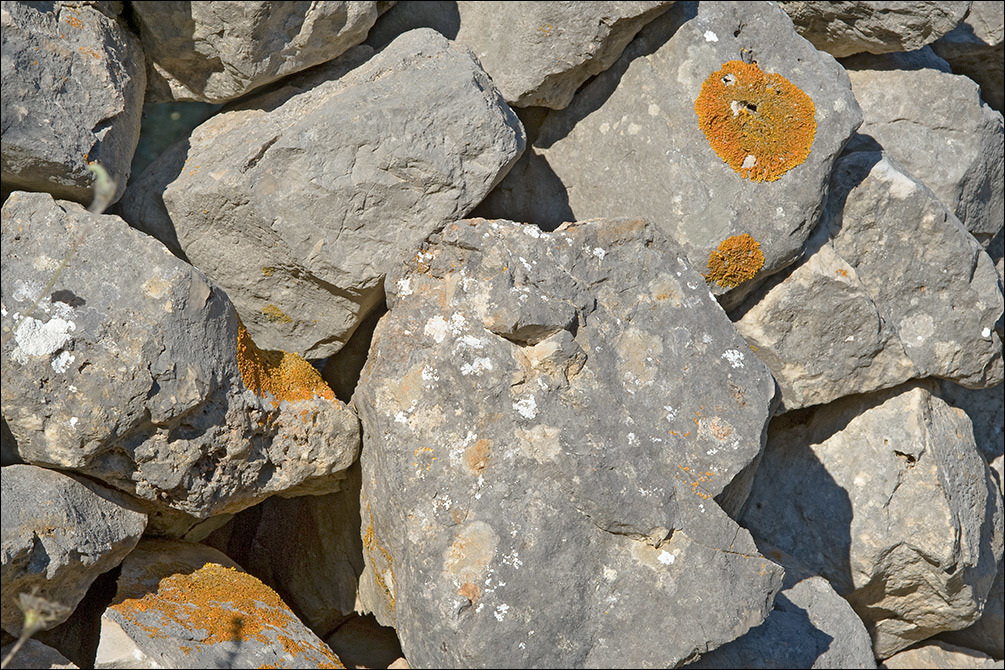
Syn: Xanthoria ectaneoides (Nyl.) Zahlbr., Xanthoria parietina var. ectanea auct. brit, Parmelia aureola Ach., Physcia aureola (Ach.) Linds., Xanthoria parietina f. aureola (Ach.) P. Syd. - Habitat: dry stony wall delimiting (mostly) abandoned fields and deserted terraced olive groves; close to sea shore; almost flat terrain; calcareous, skeletal ground; dry place, full sun; exposed to direct rain, average precipitations ~ 900 mm/year, average temperature 12-14 deg C, elevations 35 m (110 feet), Sub-Mediterranean phytogeographical region. - Substratum: vertical to steeply inclined surface of limestone rocks, west-southwest exposition. - Comment: This was a beautiful and interesting find. The lichen is very conspicuous because of its deep orange color and considerable size. Several specimens were found in the vicinity. Also its taxonomy is interesting. After Smith (2009) it should be named Xanthoria aureola. However, this name has been long time used (and is still so by many) for another very similar specimen Xanthoria calcicola Oxner. Many (Ref.:2) would rather call them and also do so (Ref.:3) Xanthoria ectaneoides. They claim that the name Xanthoria aureola opposes the Article 57 of the International Code of Botanical Nomenclature. Other consider this species only as a 'kind of' very common Xanthoria parietina. The result is a considerable confusion in naming. Be that as it may Xanthoria calcicola differs from Xanthoria aureola by densely isidiate central part of the thallus (see Ref.: 7) and less strap-shaped and sparsely overlapping thallus terminal lobes (Smith 2009). Smith (2009) considers this species as Western European species and GBIF map confirms this by showing most of observations along west coasts from north Scandinavia to Canary Islands and with a few exceptions in Germany (a single specimen now in herbarium Berlin), on Crete and several finds in Italy (Ref.:6). Almost all finds are close to sea shores. What puzzles me with this observation is the center of the thallus on picture 2b, upper part. The thallus is 'bumpy' there and this bumps may eventually be interpreted as isidia. I am not sure. If so, this would not fit to Xanthoria aureola. Also, Smith lists ' siliceous or, rarely, basic rock ' as a most common substratum, while Dobson 2005 doesn't list siliceous rock as an option, but eventually allows basic rock. This find was surely found on calcareous, basic rock. The lichen was photographed in completely dry state. Ref.: (1) C.W.Smith, et all, The lichens of Great Britain and Ireland,The British Lichen Society,(2009), p 968. (2) http://www.lichens.lastdragon.org/Xanthoria_aureola.html (accessed April 3. 2018) (3) F.S. Dobson, Lichens, The Richmonds Publishing Ca.LTD (2005), p 462. (4) V. Wirth, Die Flechten Baden-Wrttembergs, Teil.2., Ulmer (1995), p 974. (5) https://www.gbif.org/species/2609974 (accessed April 3. 2018) (6) http://dbiodbs.univ.trieste.it/italic/italic41 (accessed April 3. 2018) (7) http://www.lichens.lastdragon.org/Xanthoria_calcicola.html (accessed April 4. 2018)
-
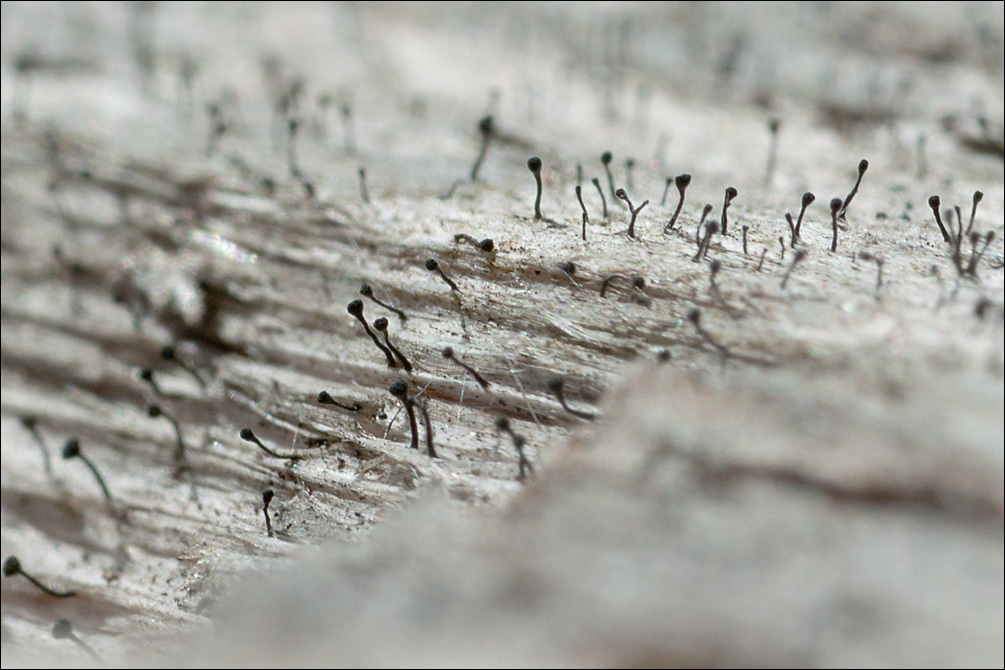
Syn.: Calicium abietinum f. glaucellum (Ach.) Erichsen, Calicium abietinum var. glaucellum (Ach.) Vain., Calicium lenticulare f. chlorodes (Nyl.) Zahlbr., Calicium lenticulare var. chlorodes (Nyl.) Erichsen, Calicium quercinum f. chlorodes Nyl., - Habitat: Mixed mountain forest, Picea abies and Fagus sylvatica dominant trees; bottom of an Alpine valley, locally almost flat terrain; alluvial, calcareous grpind; partly protected from direct rain by tree canopies; average precipitations ~ 3.000 mm/year, average temperature 4-6 deg C, elevations 1.040 m (3.400 feet), alpine phytogeographical region. Substratum: decorticated, still standing truck of a dead Picea abies.Comment: Genus Calicium includes very unusually looking lichens. They have crustose thallus, which is sometimes immersed in the substratum or very thin, so it is many times hardly invisible. Contrary to this their apothecia are elevated above the thallus mostly with long, distinct stalk. Here 'distinct' mean distinct under a magnifying glass. They are very, very small, usually less than 1 mm tall and hence not easy to spot.Pictures most probably show species Calicium glaucellum. Size of the shiny black, stalked apothecia, obovoid to weakly bell-shaped apothecia, very thin, almost invisible grayish thallus, absence of pruina (minute whitish covering on some lichens), the ratio of sporocarp height to stalk diameter and substratum speak in favor of Calicium glaucellum. Quite some time I was unable to decide between two possible names: Calicium abietinum and Calicium glaucellum. Sporocarps seem to have too thin stalks compared to their height for Calicium abietinum. Also no pruina was seen. Finally, I found out that Index Fungorum considers both names as synonyms in spite of the fact that most of my literature considers both names as separate species. Obviously they must be quite variable. Obviously microscopy data would make this determination much more reliable.According to Ref.4 and Ref.5 the species has been found in Slovenia several times, also in East Julian Alps (Ref.7). Ref.:(1) F.S. Dobson, Lichens, The Richmonds Publishing Ca.LTD (2005), p 91.(2) C.W.Smith, et all, The lichens of Great Britain and Ireland, The British Lichen Society, (2009), p 243.(3) V. Wirth, Die Flechten Baden-Wrttembergs, Teil.1., Ulmer (1995), p 204.(4) Prgger et all. 'Alphabetical list of lichenized fungi for the six phytogeographical regions of Slovenia', http://members.chello.at/johannes.pruegger/uni/slovenia/ (accessed 9.1.2018)(5) Boletus Informaticus Database, Forestry Institute of Slovenia http://www.zdravgozd.si/bi_index.aspx (accessed 9.1.2018)(6) http://www.waysofenlichenment.net/lichens/Calicium/ (accessed 9.1.2018)(7) F. Bati, K. Primoi, B. Surina, T. Trot & H. Mayzhofer, Contributions to the lichen flora of Slovenia X. - Contributions to the lichen flora from the Slovenian Julian Alps, Herzogia 16, (2003): 143154



